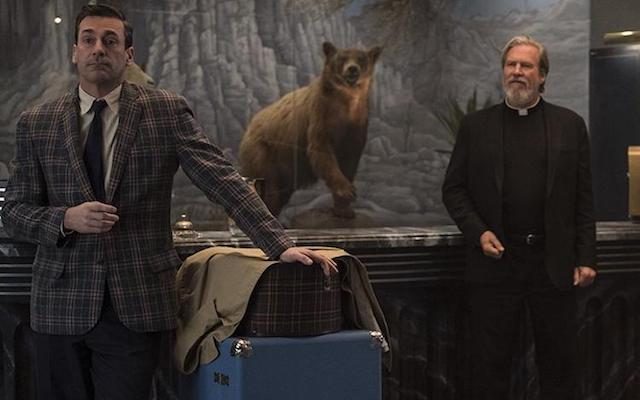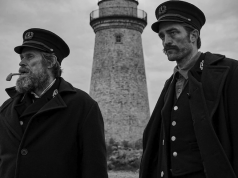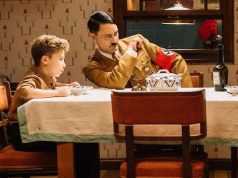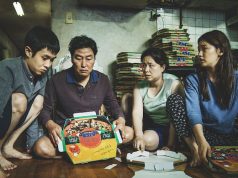
Drew Goddard wrote for TV’s “Buffy the Vampire Slayer” and “Lost” before he started making movies, and it shows. His first film as writer/director, “The Cabin in the Woods,” had a Buffy-like self-awareness and deconstructionist attitude, and his second — the pulpy neo-noir “Bad Times at the El Royale” — puts a group of strangers in an isolated location then uses flashbacks to reveal their histories one at a time. As with “Lost,” some of the tantalizing details that intrigue us so much at the beginning turn out to have disappointingly prosaic explanations; it’s more enjoyable as an unsolved mystery than as a solved one. But it’s a heck of a fun ride anyway, thanks to Goddard’s masterful storytelling. The guy knows when and how to reveal information for maximum impact.
The time is 1969 — Jan. 27, to be exact, assuming the Nixon press conference seen on TV is live or from earlier that day. The El Royale, a once-hoppin’ mid-century modern motel near Lake Tahoe whose gimmick is that it straddles the California/Nevada border, has fallen on hard times. There’s no one at the front desk when guests start trickling in: Laramie Seymour Sullivan (Jon Hamm), a folksy traveling salesman from Mississippi; Darlene Sweet (Cynthia Erivo), a young black woman who is presumed to be a prostitute; Father Daniel Flynn (Jeff Bridges), a grizzled, friendly Indiana priest; and a seen-it-all woman in sunglasses (Dakota Johnson) who signs her name “F*** YOU” on the register. A young clerk, Miles (Lewis Pullman), is eventually rousted from the maintenance closet (where he’s been shooting up heroin, but that detail isn’t important now), and room assignments are made.
Describing what happens next is best done in vague terms. Every person mentioned so far is hiding something, and the El Royale, it turns out, is not a good place for keeping secrets, on account of every room being under surveillance. There was a prologue, set in 1959, in which we saw a man hide a satchel under the floorboards of one of the rooms, so we know that’s going to come up again. That’s on top of somebody having arrived at the El Royale with someone tied up in the trunk of their car, and in addition to the charismatic cult leader (Chris Hemsworth) who becomes a factor later on. Goddard breaks the movie into chapters, each named for a room number (or maintenance closet) and presenting the backstory of that room’s current occupant, often ending with a surprise reveal that makes us question what we thought we knew about that person. The plot keeps on thickening, in other words, with new details and possibilities arriving at an almost delirious pace.
The way everyone’s stories converge and overlap while evocative pop songs play on the soundtrack makes this feel like a nicer “Pulp Fiction,” one that’s more interested in telling an entertaining story than in being cool (but is cool nonetheless). Goddard takes his time and lets the characters have long conversations, including characters who won’t survive the movie, which keeps us guessing even on the matter of who’s going to emerge as the protagonist.
This free-wheeling but carefully controlled structure is a perfect environment for fun-loving actors to cut loose, sinking their teeth into their own multi-layered characters while facing off against each other. I only wish it added up to more than it does. “The Cabin in the Woods” brilliantly revealed itself to have been a shrewdly built dissection of horror movies in which every detail matters; “Bad Times at the El Royale,” in contrast, doesn’t have a central theme to tie its many, many threads to, and some are still dangling when it’s over. You’re expecting this delightfully twisted journey to have a humdinger of a destination, and then, well, no, turns out the journey was the thing. Keep that in mind and you’ll have a good time.
B (2 hrs., 21 min.; )





